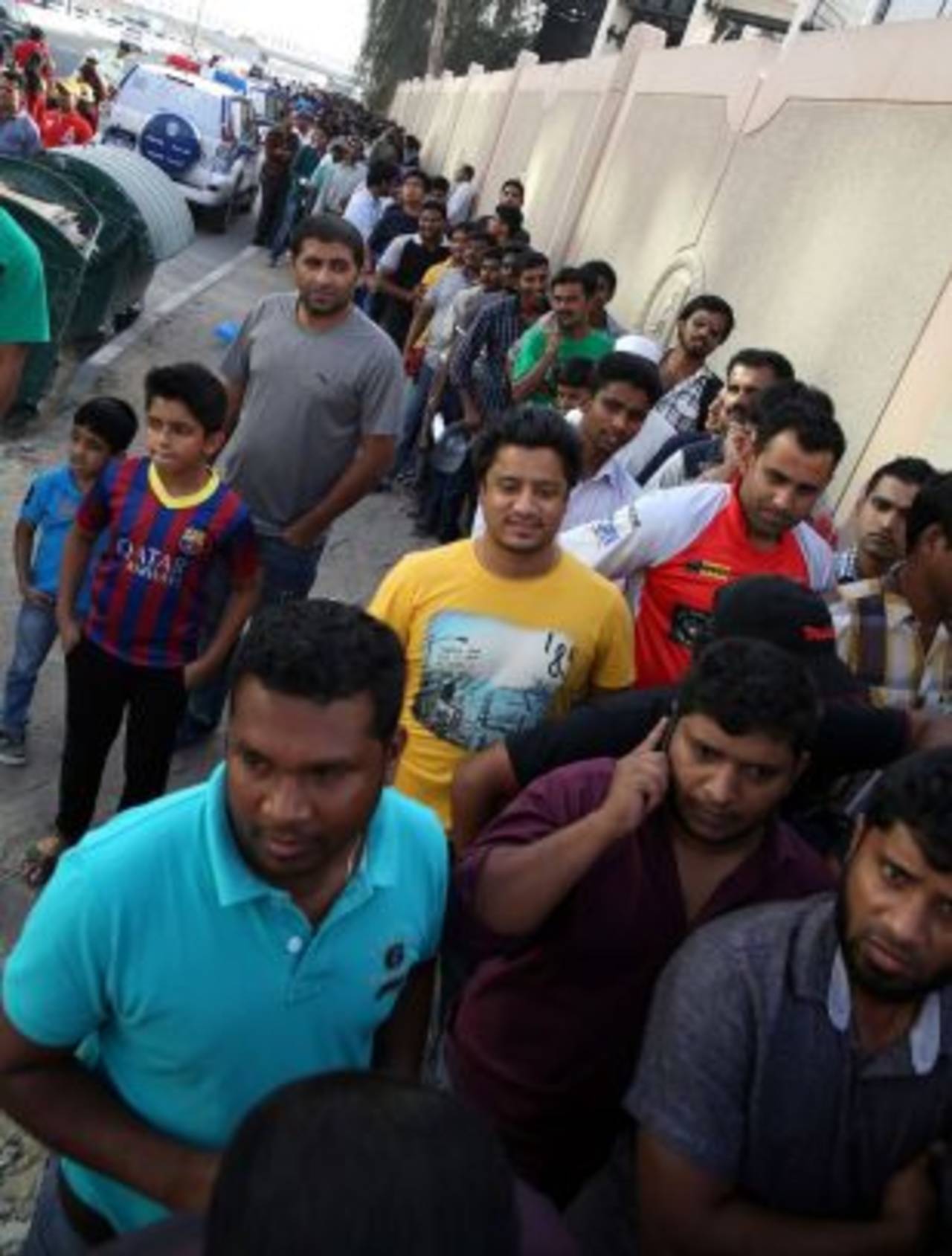The weather
April 18, Chennai Super Kings versus Kings XI Punjab. There is a place and a time for watching cricket from grass banks. Abu Dhabi in April, at 2.30 in the afternoon, didn't seem like it. The approach to the stadium, over a vast expanse of sand with dust blowing all over the place, added to the feeling of foreboding that had led, earlier, to the procurement of a tube of SPF 80 sunscreen.
And yet, the front slope of the West Mound stand was packed with spectators. Down the back slope, meanwhile, rolled a group of children attending their first ever cricket match. The sun proved a largely benign presence, easily kept at arm's length by means of an umbrella or a wide-brimmed hat. It was hot, yes, but only as hot as a normal summer day.
This was the case right through the UAE leg of the tournament, in all three venues. This wouldn't have been a surprise for anyone who had done some rudimentary research. The UAE is at its hottest in July and August, and is cooler than the warmer parts of India in April and May. In April, the average maximum temperature in Abu Dhabi is 33°C. The corresponding figure in Delhi is 36°C.
By India, for India
Even if the weather wasn't outrageously sapping, scheduling afternoon matches at 2.30pm seemed a touch excessive. The match timings - evening games began at 6.30pm local time - were clearly aimed at the Indian TV audience, long accustomed to their 4.00pm and 8.00pm starts.
The Indian TV audience is used to this sort of thing, of course. During the World T20 in 2010, they got to tune in at 7.00pm to watch West Indies take on India in Bridgetown, where the local time, for the local fans, was 9.30am. An early morning start, for a format of the game designed to be played and watched under lights.
Timings aside, Sharjah, Dubai and Abu Dhabi may well have been Bangalore, Mohali and Mumbai, considering the wall-to-wall IPL branding plastered all over the stadiums. Or the Bollywood music that blared incessantly from the DJ's turntables. Or the flyers that remained strewn around the stands after the spectators had left, selling electronic appliances at duty-free rates to fans who had flown in from India.
The fans
Most fans at the stadiums, though, belonged to the massive Indian diaspora that lives in the UAE, and the tournament afforded them a chance to watch India's big names in the flesh for the first time since 2006, when India played two ODIs against Pakistan in Abu Dhabi, and for the first time in a sustained manner since 2000, when India last played an ODI tournament in Sharjah.
The stadiums, as a result, were uniformly packed to capacity, unlike the ones in South Africa that had hosted the 2009 edition of the tournament. This in itself should earn the UAE extra points in favour of hosting future editions of the IPL or the Champions League or even international cricket involving India.
You do wonder, though, why the BCCI waited until the general elections were almost upon India before they went in search of a host. Everyone in India knows that elections happen once every five years; the BCCI, moreover, had the precedent of 2009 to go by.
Finalising the venue earlier might have also helped franchises draw up schedules for their players to make public appearances outside matches, like they do in India. As it was, the average fan in the UAE didn't even get to watch the opening ceremony, an invitees-only event.
The pitches
They got to watch some pretty good cricket, though, even if it wasn't of the edge-of-the-seat kind for most part. There were only two 200-plus totals in 20 matches, both of which came in the same game, and 16 scores under 140. It was good to see bowlers influence matches, though, and some of the young fast bowlers from India enjoyed themselves.
Varun Aaron showed he could be accurate as well as quick, Mohit Sharma, Sandeep Sharma and Ishwar Pandey moved it around, and Bhuvneshwar Kumar was as much of a threat in the death as he was in his natural habitat of the early overs. All of them conceded between 5.56 and 6.69 runs per over.
This had a lot to do with the pitches in the tournament. The pitches in Sharjah had a glossy sheen to them, and batsmen found the ball coming on beautifully in the initial part of the tournament. Abu Dhabi helped both spin and seam, with a bit of bounce and green patches that came alive under lights. Dubai was on the slow side, and seamers who took the pace off the ball proved quite difficult to hit.
Marauding Maxwell
Over the course of those three innings, Maxwell showed he could play the most gorgeous orthodox drives, the most inventive laps and reverse-sweeps, and the most primitive clubs over the leg side, all the while looking a little bored, as if he was asking the bowlers "is that all you've got?"
Spectators at the three venues exercised their lungs frequently and vociferously over the two weeks that the IPL pitched camp in the UAE. Their noisiest cheers, though, didn't greet MS Dhoni or Virat Kohli. They came instead in Sharjah, during the 15th over of Kings XI Punjab's innings against Sunrisers. Maxwell had almost walked off the ground, after slogging Darren Sammy straight into deep midwicket's hands, before the third umpire confirmed Sammy had overstepped. The umpire signalled no-ball. Maxwell returned to the crease. Sharjah roared its approval.
Karthik Krishnaswamy is a senior sub-editor at ESPNcricinfo
